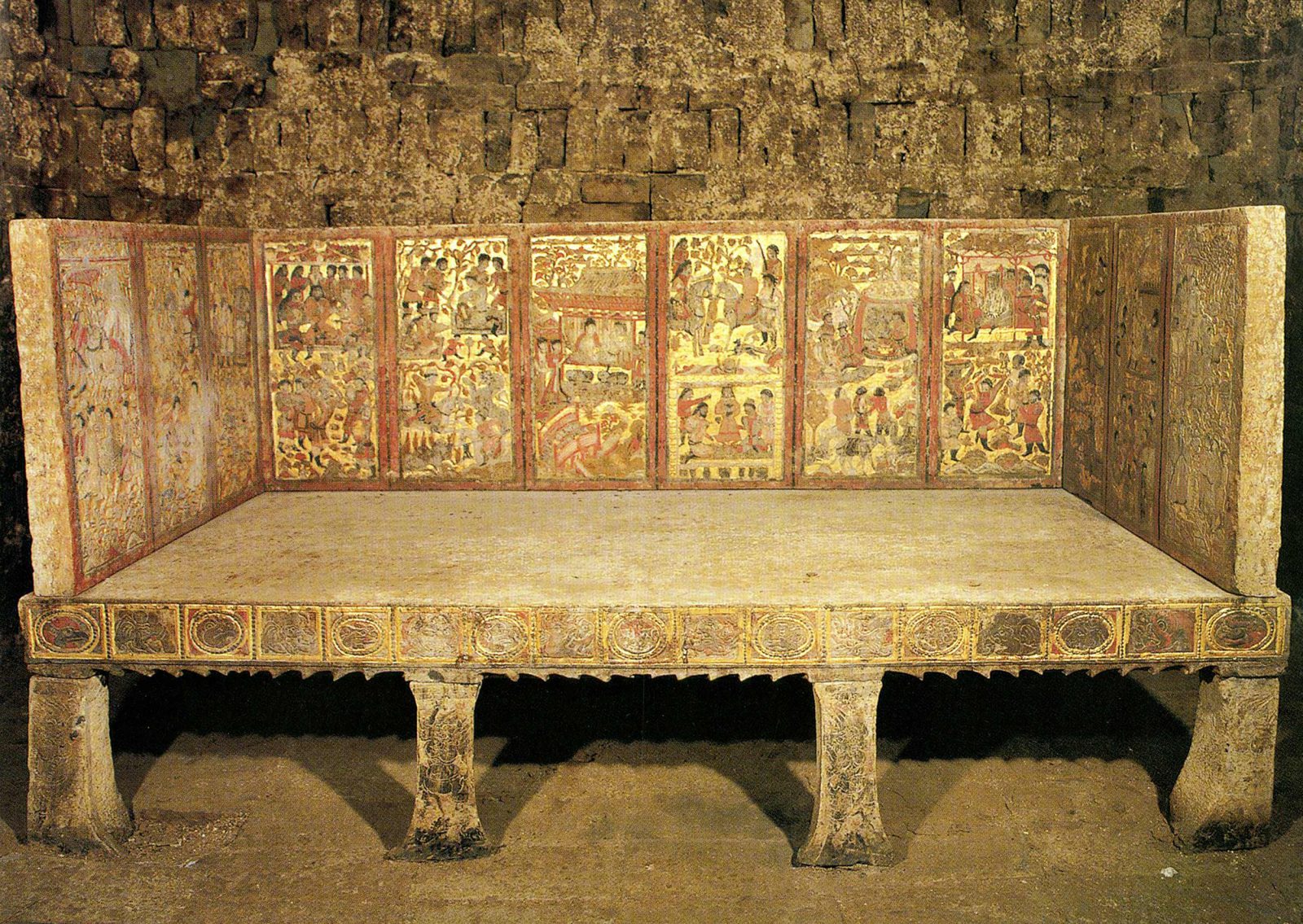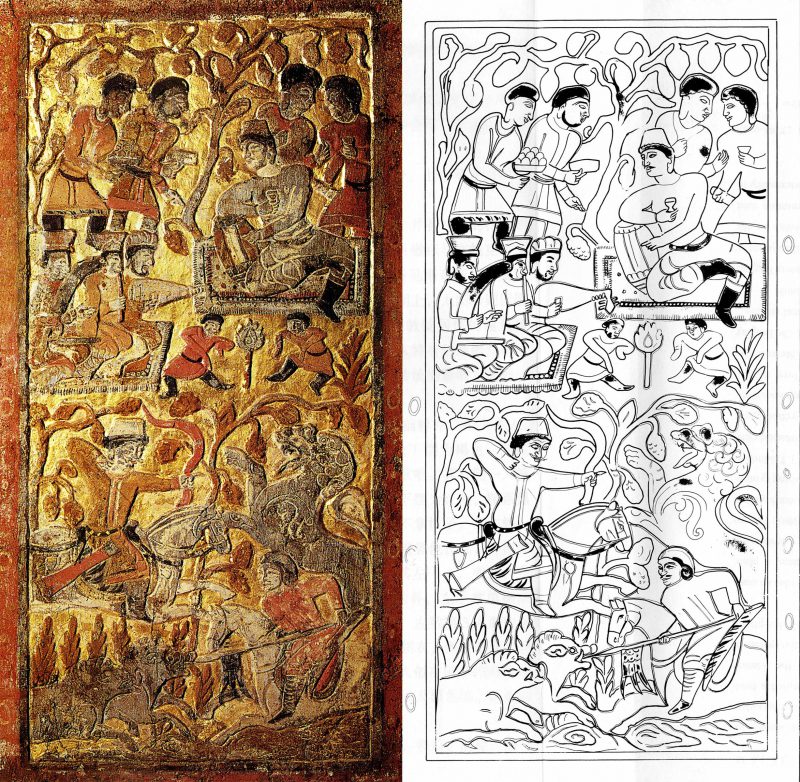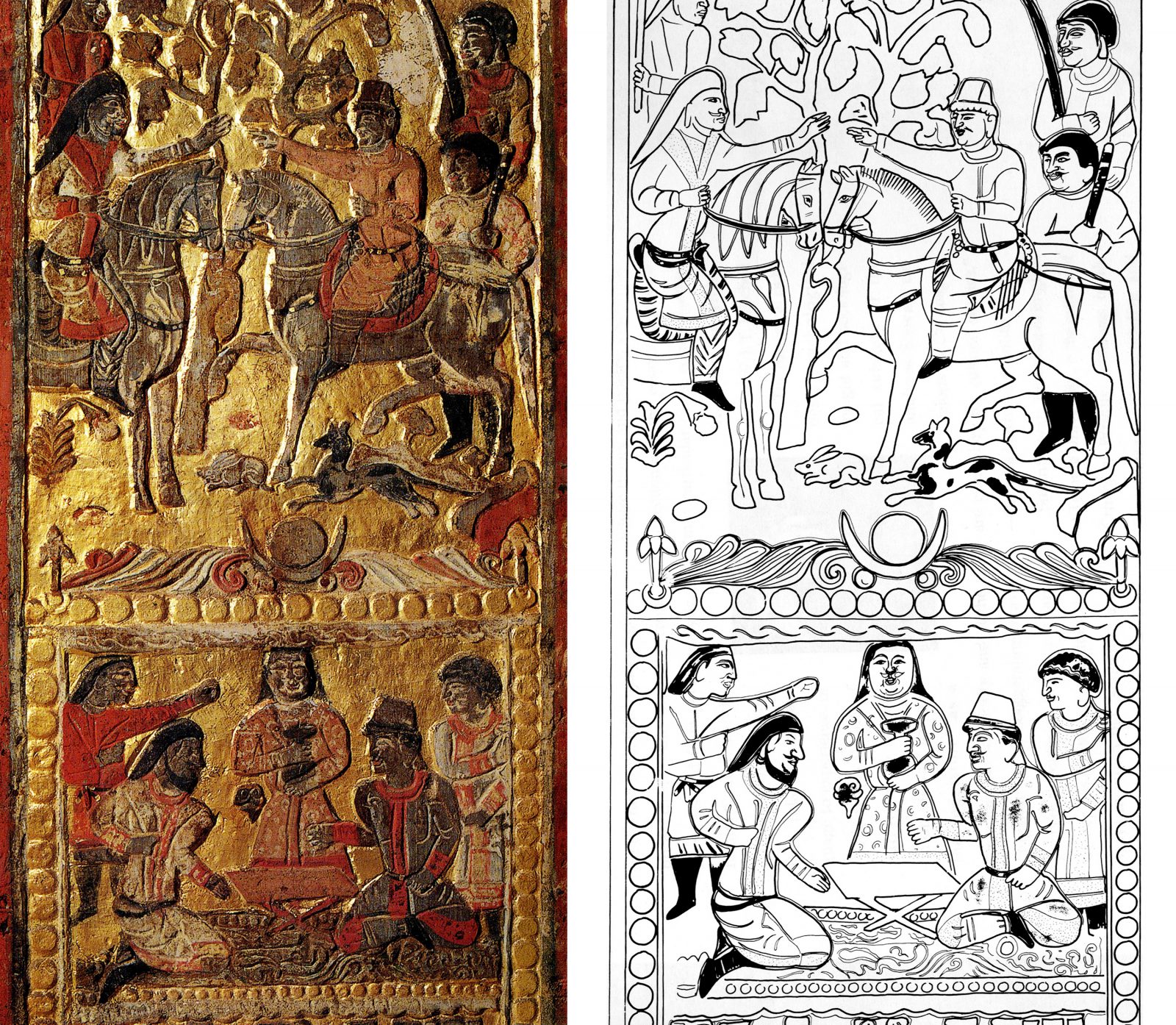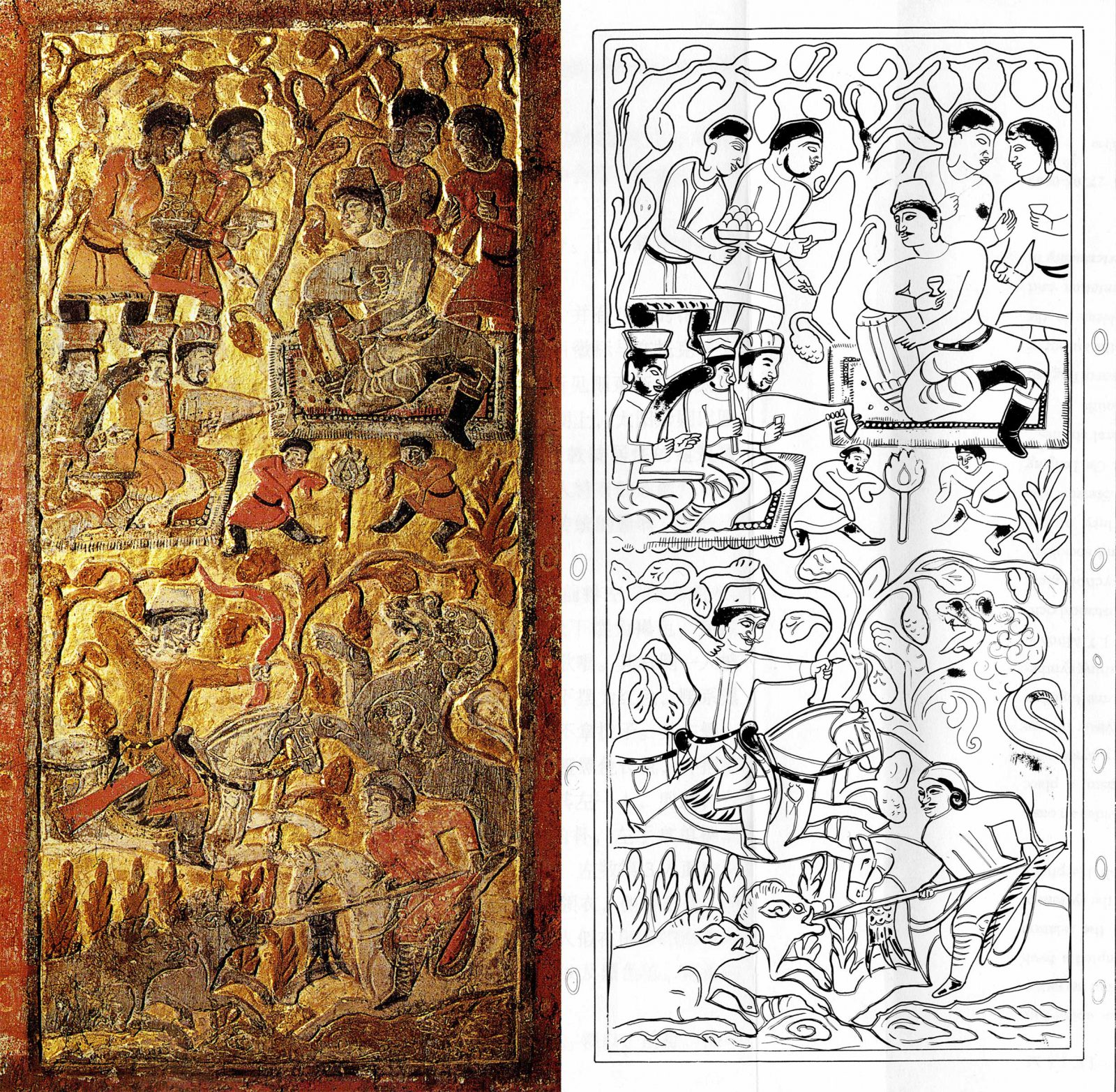
An Qie’s Funerary Bed
Funerary Bed of An Qie
Xi’an, Shaanxi Province, China ; dated to 579 CE
Gilded and painted stone relief; H. 1.17 × W. 2.28 × D. 1.3 m
Excavated in Xi’an by the Shaanxi Provincial Institute of Archaeology, Xi’an,
Shaanxi History Museum
Excavated in the northern suburbs of Xi’an in 2000, the tomb of An Qie 安伽 (also transliterated as An Jia) offers significant insights into the experiences of people of Sogdian descent living in China in the 6th century. The tomb consists of a single brick chamber accessed by a passageway decorated with mural paintings. A painted stone relief in a lunette above the door depicts a Mazdean/Zoroastrian ritual, and a large fire altar supported by three camel foreparts stands in the middle of the composition. Flanking the altar are two half-man, half-bird creatures, each wearing a mouth cover (padam) so as not to pollute the fire. Both attend to furnished altar tables. Below them, tucked into the corners of the lunette, each of two small figures kneels before a fire altar. In the sky above hover two heavenly musicians (apsaras); Fig. 1. The kneeling people are most likely An Qie (right) and his wife (left), partaking in eternal ritual to assure an auspicious afterlife.
But the showstopper here is behind the door—an elaborate stone bed set in the center of the tomb chamber. The three slabs composing the back and sides of the bed are divided into twelve decorative panels, each one carved, painted, and gilded; Fig. 2.

Fig. 2 Click to enlarge and scroll through the Panels from the Funerary Bed of An Qie. Xi’an, 579 CE. Shaanxi Provincial Institute of Archaeology, Xi’an.
Adapted from Shaanxi Provincial Institute of Archaeology, Xi’an Bei Zhou An Jia mu, pls. 26, 37, and 66.
A stone epitaph reveals that An Qie came from Guzang 姑臧 (modern-day Wuwei 武威, in Gansu Province), an important Sogdian settlement area at the time. He occupied the distinguished post of sabao 薩保, or community leader, of Tongzhou 同州 (modern-day Dali County 大荔县 in Shaanxi Province) as well as da dudu 大都督, or area military commander-in-chief, before his death in 579 at the age of sixty-two. Some scenes on his funerary bed appear to be biographical, showing some of his greatest successes, such as diplomatic parleys with the Turks (identified by their long hair) and other foreigners; Fig. 2. Others seem to symbolize his status and power, such as his heroically hunting a lion—an animal never native to China; Fig. 3.

Fig. 4 Detail of Funerary Bed of An Qie: An Qie being entertained by dancers and musicians (top half); An Qie, identified by his white sabao cap, heroically killing a lion (bottom half). Shaanxi Provincial Institute of Archaeology, Xi’an.
After Shaanxi Provincial Institute of Archaeology, Xi’an Bei Zhou An Jia mu, pl. 44.
This tomb is part of a growing body of archaeological discoveries of Central Asians living and thriving in China during the 6th and 7th centuries. As far as we know, the Sogdians did not produce such large stone carvings in their homeland. However, the narrative qualities of their wall paintings, as well as their religious beliefs, were translated in China into carved reliefs on their stone funerary beds and sarcophagi. Through its visual, epigraphic, and material qualities, An Qie’s tomb tells the story of a descendent of Sogdian émigrés who made a successful path for himself in Chinese society.
by Julie Bellemare
For more detailed reports on this tomb, see Yin Shenping et al., “Notes on the Excavation of the Tomb of An Qie,” trans. Bruce Doar and Susan Dewar, China Archaeology and Art Digest 4, no. 1 (December 2000): 15–29; and Institute of Archaeology of Shaanxi 陝西省考古研究所, “Xi’an faxian de Beizhou An Jia mu” “西安发现的北周安伽幕” [Excavation of An Jia’s Tomb of the Northern Zhou in Xi’an], Wenwu 2001, vol. 1: 4–26.






